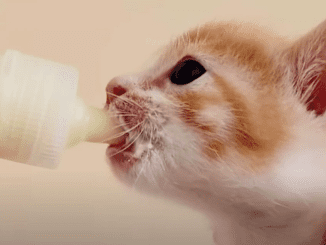In recent years, there have been numerous instances where animals have been seen actively seeking help from humans. Whether in urban environments or rural areas, the connection between humans and animals has become increasingly significant, especially as animals face various threats to their survival. From injured wildlife to domestic pets in distress, many animals seem to understand that humans can offer assistance. Here’s a closer look at how animals have been asking for help and the importance of responding to their needs.

1. Injured or Sick Wildlife
In many cases, wild animals in distress have been spotted approaching humans when injured or ill. Whether it’s a bird with a broken wing or a deer entangled in a fence, these animals often exhibit behavior that suggests they are seeking help. Research suggests that some animals are able to recognize humans as potential sources of assistance, possibly due to our ability to intervene in situations that could mean life or death for them.
Example: There have been stories of foxes and squirrels limping toward people, likely in an attempt to find help for broken limbs. In urban areas, stray dogs and cats sometimes approach humans seeking food, shelter, or medical attention.
2. Domestic Animals in Distress
Domestic animals, particularly pets, are often vocal and clear in their communication when they need help. Dogs might bark or whine to get attention, while cats may meow persistently when they are unwell or in danger. More subtly, animals like rabbits, hamsters, and even fish may display unusual behavior, signaling that something is wrong.
Example: A dog that has been hit by a car might drag itself toward a human, even though it is in pain, in the hope of being helped. Cats have been known to seek out their owners when they are sick or injured, often hiding in plain sight until their discomfort becomes unbearable.

3. Animals Demonstrating Emotional Appeal
Some animals appear to make emotional pleas for help. In the case of endangered species or animals in captivity, there have been reports of certain creatures showing behaviors that suggest a deep understanding of their predicament. Elephants, for instance, have been known to express signs of distress when separated from their herd or when in danger, approaching humans for comfort or help.
Example: In some wildlife sanctuaries, elephants have been seen extending their trunks toward caretakers as if asking for reassurance or aid, especially after traumatic experiences such as poaching or natural disasters.

4. How Humans Can Help
When animals seek help, the most important thing is to respond with compassion and care. Here are a few ways humans can assist:
- Provide immediate care: If you encounter an injured animal, try to safely transport it to a vet or wildlife rescue organization.
- Support animal welfare organizations: Many animals are in need of ongoing protection. Volunteering, donating, or adopting can make a difference.
- Be mindful of your environment: In urban or rural areas, avoid littering or leaving dangerous objects around that can harm animals.

5. A Call for Responsibility
Animals asking for help from humans is a reminder of the responsibility we bear toward the creatures with whom we share our planet. Whether through direct assistance or supporting conservation efforts, we have a role in ensuring that animals are treated with kindness and respect. It is a shared duty to respond to their cries for help—not just for their survival, but for the well-being of the entire ecosystem.
Conclusion
Animals, in their own way, have learned to seek help from humans when in need. Their calls for assistance serve as a reminder that, as caretakers of the Earth, we must remain vigilant and compassionate. Responding to their cries for help not only alleviates their suffering but also strengthens the bond between humans and the animal kingdom, fostering a world of empathy and mutual respect.


